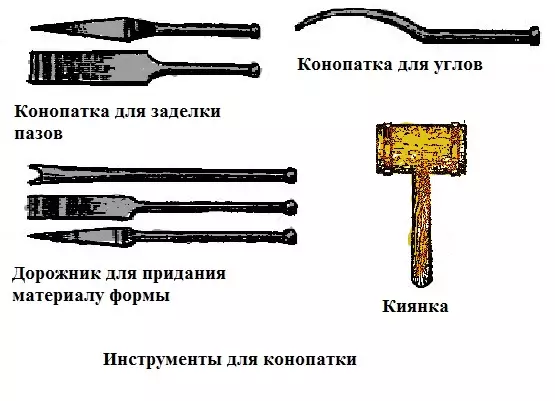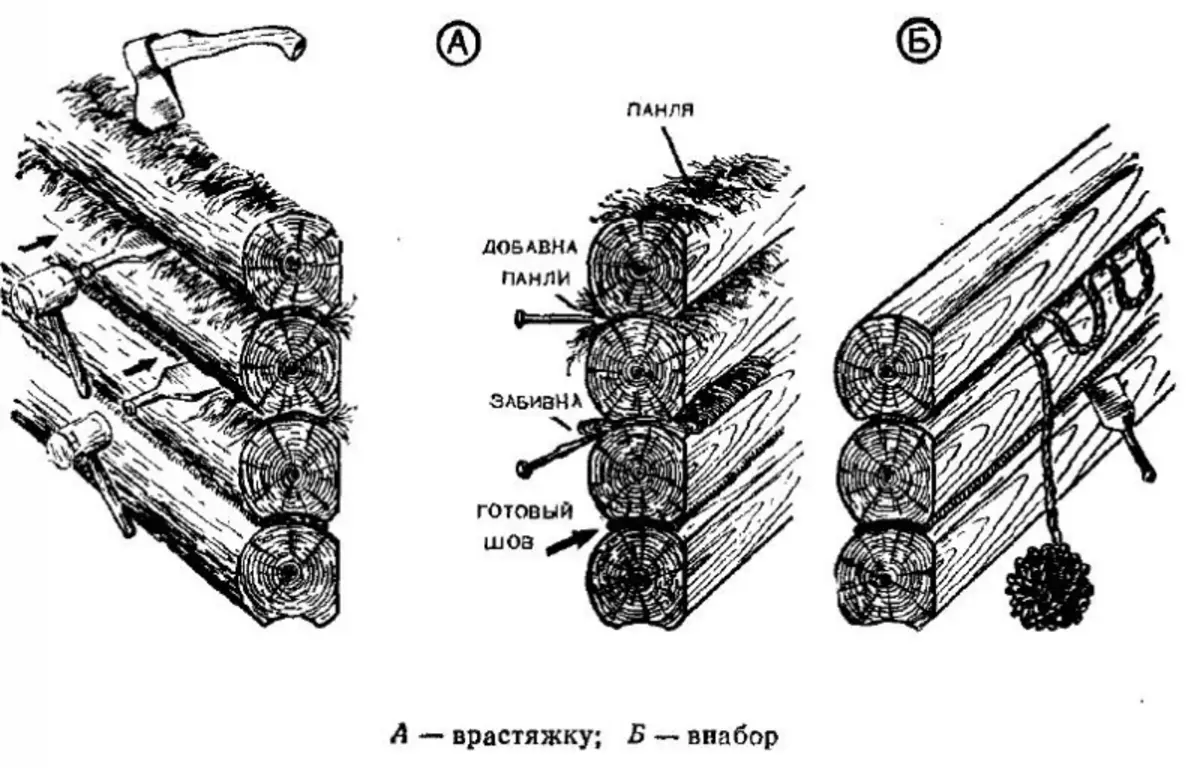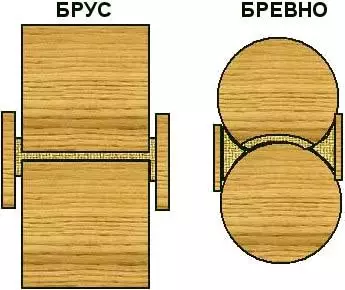Houses from Bruus durable, durable, beautiful, warm, not very expensive. But they need outdoor decoration. When building, very small gaps remain between the bars. No matter how trying to put them tightly, these cracks will still remain. They are dangerous to the fact that through them the excess moisture penetrates into the house, the wind blows. As a result, soon the building will require repair. So that this does not happen, the structure needs to be caught.

Tool for cacopa.
The caulkite of the house from the bar increases the service life of the building, protects it from the negative impact of the external environment, will make the house warmer. It is necessary, regardless of what material it is made - a rounded, glued or profiled timber. The buildings are subject to shrinkage, so after some time the slot between the logs may increase.
For cacopa, felt, moss, jute, hemp and palable are used.

Methods of cacopa houses from a bar.
All these materials have common properties:
- Natural natural;
- retain heat indoors;
- They do not like parasites;
- allow the house to "breathe";
- High service life (over 20 years);
- Do not absorb moisture.
Felt - linen material in the form of a tape. Moss - sphagnum, grows on the swamp, used earlier in the villages and villages, can be collected independently. Jute - made from the Jute Plant, which grows in countries with a tropical climate. Hemp - hemp fibers. Pacle - Flax residues from the production of ropes, looks like hair.
Stages of Konopkka
You can careen at home from the bar immediately during the construction or after 6-12 months, that is, after the shrinkage of the building, in warm, dry weather. Cut the slots can be 2 ways: stretch marks - from the material they make ribbons that are tamped to gaps between the logs; In the set - they make ribbons, beware of the loop in the ball and dial out of it, and then they already close the gaps.
Article on the topic: Boxing box for storing umbrellas, ladies' trifles and not only!

Caulking at home.
Close the slots are needed not only outside, but also from the inside of the building. First you need to calculate the required amount of material: to fold the length of all seams, and increase the resulting value by 2-3 times. Bruz cacked is done on all walls of the building. It makes no sense to insulate only one, as it will not protect from external influences.
For insulation of gaps between logs, the following tools will be useful to you:
- roulette;
- Steel blades of different sizes with a wide and narrow flat blade;
- Rubber hammer.
You need to start work from the bottom seam. Moreover, you need to close it all over the perimeter of the house, and not just on the same wall. You can choose any way of rooting the building. You need to take a piece of material and tamper it into the walls with metal blades. Where the logs are very closely adjacent to each other, it is necessary to use a rubber hammer for the rambling. First, the walls canopate from the outside, and then with the inner. Remember that you need to close the junctions between the bars along the entire length. Be careful and more careful, you can accidentally increase the gaps between the logs so that they will be already hard to shut up with the insulation.
The process of cacopa of walls from the profiled bar differs from the rounded. The first type of logs has a rectangular shape: one is flat, the other is figured (there are grooves). Many think that houses from such a material do not need to be caught, but it is not. Sometimes the gaps are plugged twice: during construction and after shrinkage. In contrast to the profiled timber, they have a rounded shape from all sides, but at the same time the area of contacting the logs is much smaller, therefore more material will be required for the cacopa.
